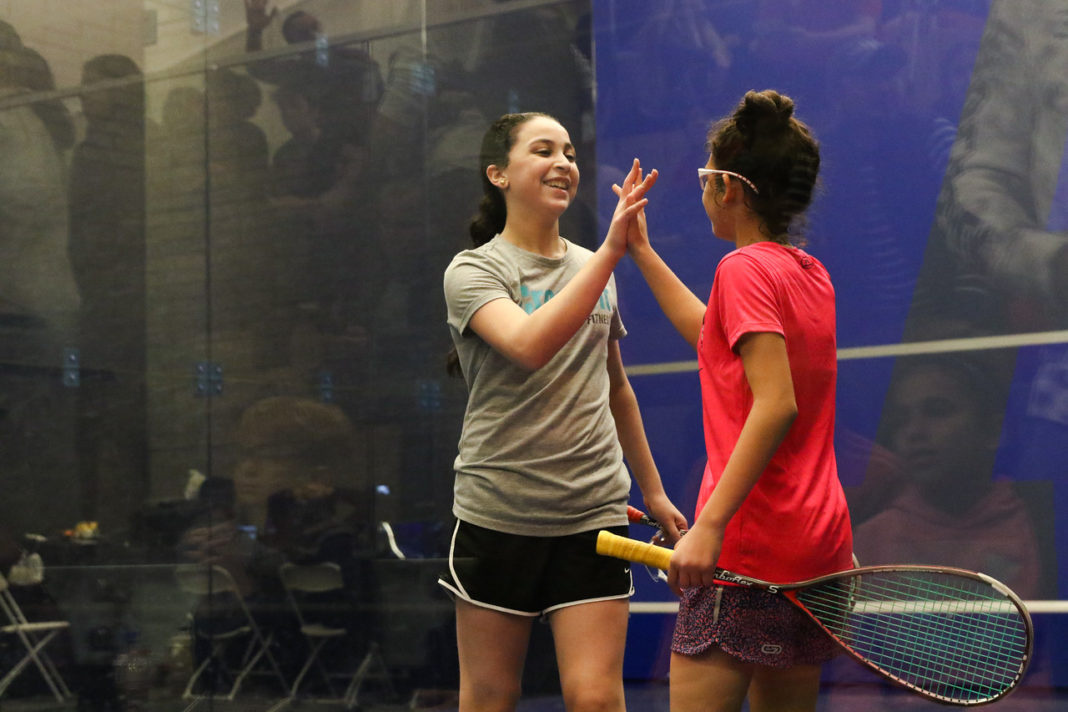Brown University’s sudden surprise announcement yesterday that women’s and men’s squash would lose their varsity status as a sport has sounded the alarm community-wide. Setting aside the Brown administration’s conflicting messages in their announcement, perhaps most distressing is the implicit reliance on either false, or totally outdated, assumptions about squash. In fact, the very goals the “Excellence in Brown Athletics Initiative” seeks to address with immediate effect in divesting from more than a dozen sports, such as the need for the “recruitment of outstanding scholar-athletes,” providing “equal opportunities for men and women,” and “supporting diversity and inclusion,” squash exceeds or leads in.
Academically Qualified Student-Athletes
Squash players are high performers in academics. Squash recruits at the most rigorous colleges and universities in America are consistently at the top of the school’s Academic Index chart. This allows athletic departments to balance their index requirements and recruit less academically qualified athletes in other sports in order to boost their competitiveness, while at the same time remain competitive in squash.
Equal Opportunity
At the collegiate varsity level, there are an equal number of women’s and men’s teams, and further, the sport is one of only a few worldwide that offers full parity in prize money at the professional level. No other sport is as thorough or committed to equal opportunity for women and men than squash.
As recently as this March, the global Professional Squash Association (PSA), which oversees women’s and men’s squash, were the first signatory to support the United Nations Women Sports for Generation Equality initiative.
Diversity & Inclusion
Squash has invested heavily in diversifying the sport and offering opportunities to benefit from the sport to kids from all backgrounds. Squash and education programs are in nearly two dozen cities across the country offering academic tutoring, mentoring and squash instruction to thousands of kids in underserved communities as a vehicle to higher education. These squash programs offer opportunities to those who otherwise wouldn’t have them. Amherst College is among a growing number of schools using athletic recruiting to become more diverse and inclusive, and to increase social mobility in this country.
Because of squash’s 150-year global history, squash attracts athletes to U.S. schools from every corner of the world. World Champions rein from all five continents, and more than fifty countries are represented in the college ranks. This geographic and ethnic diversity from all over the world dramatically enhances the value of the collegiate experience for the entire college community.
Contrary to outdated and poorly informed impressions of the sport, squash literally defines what it means to be equal, inclusive, diverse and balanced in its focus on academic and competitive excellence. Squash athletes are the embodiment of what it means to be a scholar-athlete.
A Rising Sport
Squash is clearly on the ascendancy. US Squash membership has grown 12% year-over-year for the last four years. It’s grown 300% in 15 years. Junior squash participation nationally has exploded in participation by more than 500% in the last decade. There are more than ten times the number of high school squash programs actively competing in the country than there were just 15 years ago.
This growth has driven colleges to add varsity programs, at schools as diverse as Stanford University, Drexel University, George Washington University, the University of Virginia, Dickinson College, Columbia University, Chatham University and most recently, Georgetown University. Why? For all the reasons already stated: the sport attracts academically qualified, diverse athletes from all over the world and in every city and neighborhood in the country, from St. Louis to San Diego, Detroit to Dallas, Boston to Baltimore, and from the south side of Chicago to the south Bronx.
Finally, squash is one of the few truly lifelong sports, allowing people and families to enjoy the sport and its benefits from ages five to 95. Ensuring access to the sport for all is part of US Squash’s core mission, and every measure of the sport indicates significant progress towards this vision.
Given Brown’s squash program is fully funded by endowment funds and other commitments of support, it’s difficult to accept any rational argument for reducing the sport’s status to club level. Therefore, the question to ask the Brown University administrators is whether, based on the facts, is whether there are actually any sports better suited than varsity squash to address their stated goals of excellence, equality, diversity and inclusion?












